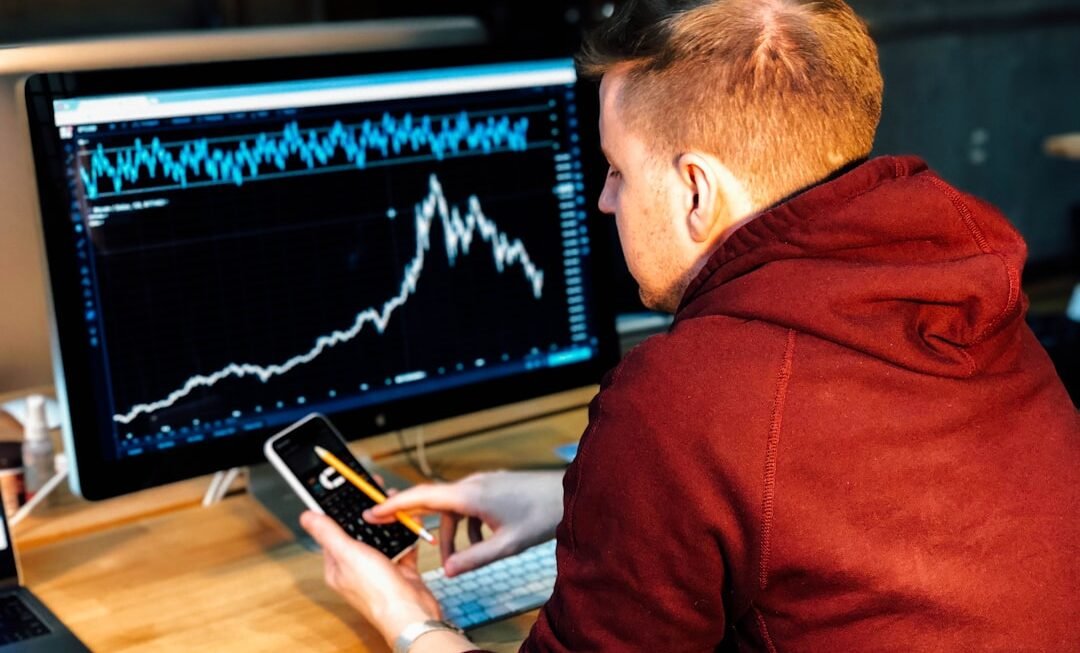Deep learning, a subset of machine learning, has emerged as a transformative technology in various fields, including finance, healthcare, and autonomous systems. It is characterized by its use of neural networks with many layers, which enable the model to learn complex patterns and representations from vast amounts of data. The architecture of deep learning models mimics the human brain’s neural networks, allowing for sophisticated processing capabilities.
This technology has gained traction due to its ability to handle unstructured data, such as images, text, and audio, making it particularly valuable in today’s data-driven world. The rise of deep learning can be attributed to several factors, including the exponential growth of data availability, advancements in computational power, and the development of more sophisticated algorithms. As organizations increasingly rely on data for decision-making, the need for effective tools to analyze and interpret this information has become paramount.
Deep learning provides a robust framework for extracting insights from complex datasets, enabling businesses to make informed decisions based on predictive analytics and pattern recognition.
Key Takeaways
- Deep learning is a subset of machine learning that uses neural networks to mimic the human brain’s ability to learn and make decisions.
- Market pattern recognition is crucial for identifying trends, making predictions, and informing investment decisions in various financial markets.
- Deep learning algorithms, such as convolutional neural networks and recurrent neural networks, are used to analyze and recognize patterns in market data.
- Deep learning applications in market pattern recognition include stock market prediction, cryptocurrency market analysis, forex market forecasting, and identifying market trends.
- Deep learning is also used for sentiment analysis in market pattern recognition to gauge public opinion and predict market movements.
Market Pattern Recognition and its Importance
Market pattern recognition refers to the identification of trends and patterns within financial markets that can inform trading strategies and investment decisions. This process is crucial for investors and traders who seek to capitalize on market movements. By recognizing patterns such as price trends, volume spikes, or recurring behaviors, market participants can make predictions about future price movements.
The ability to accurately identify these patterns can significantly enhance the chances of successful trades and investments. The importance of market pattern recognition cannot be overstated. In an environment characterized by volatility and rapid changes, having a reliable method for predicting market behavior is essential.
For instance, technical analysts often rely on historical price data to identify support and resistance levels, which can indicate potential entry or exit points for trades. Furthermore, understanding market patterns can help investors manage risk more effectively by allowing them to anticipate adverse movements and adjust their strategies accordingly.
Understanding Deep Learning Algorithms
Deep learning algorithms are designed to process large volumes of data through multiple layers of interconnected nodes or neurons. Each layer extracts increasingly abstract features from the input data, allowing the model to learn complex representations. The most common type of deep learning architecture is the feedforward neural network, where information moves in one direction—from input to output—without looping back.
Other architectures include convolutional neural networks (CNNs), which are particularly effective for image data, and recurrent neural networks (RNNs), which excel in processing sequential data such as time series. Training deep learning models involves feeding them large datasets and adjusting the weights of the connections between neurons based on the error of the model’s predictions. This process is typically accomplished through backpropagation, where the model learns from its mistakes by minimizing a loss function.
The choice of hyperparameters, such as learning rate and batch size, plays a critical role in the model’s performance. Additionally, techniques like dropout and regularization are employed to prevent overfitting, ensuring that the model generalizes well to unseen data.
Deep Learning Applications in Market Pattern Recognition
Deep learning has found numerous applications in market pattern recognition, significantly enhancing the ability to analyze financial data. One prominent application is in algorithmic trading, where deep learning models are used to identify trading signals based on historical price movements and other relevant indicators. By analyzing vast datasets that include price history, trading volume, and even social media sentiment, these models can generate buy or sell signals with remarkable accuracy.
Another application lies in risk management. Financial institutions utilize deep learning algorithms to assess the risk associated with various investment portfolios. By recognizing patterns in historical market behavior during different economic conditions, these models can predict potential downturns or volatility spikes.
This capability allows firms to adjust their investment strategies proactively, mitigating potential losses and optimizing returns.
Stock Market Prediction using Deep Learning
Stock market prediction is one of the most well-researched areas within deep learning applications. Various models have been developed to forecast stock prices based on historical data and other influencing factors. For instance, long short-term memory (LSTM) networks—a type of RNN—are particularly suited for this task due to their ability to remember long-term dependencies in sequential data.
By training LSTMs on historical stock prices along with technical indicators like moving averages or relative strength index (RSI), traders can generate predictions about future price movements. Moreover, deep learning models can incorporate alternative data sources such as news articles or social media posts to enhance prediction accuracy. Natural language processing (NLP) techniques can be employed to analyze sentiment from these texts, providing additional context that may influence stock prices.
For example, a surge in positive sentiment regarding a company could indicate a potential rise in its stock price, allowing traders to position themselves advantageously.
Cryptocurrency Market Analysis with Deep Learning
The cryptocurrency market presents unique challenges and opportunities for deep learning applications due to its high volatility and 24/7 trading environment. Deep learning models can be employed to analyze price movements and trading volumes across various cryptocurrencies, helping traders identify profitable opportunities. Techniques such as CNNs can be utilized to analyze price charts visually, while RNNs can process time series data effectively.
Additionally, deep learning can assist in detecting fraudulent activities within cryptocurrency exchanges. By analyzing transaction patterns and user behaviors, models can identify anomalies that may indicate fraudulent transactions or market manipulation. This capability is crucial for maintaining trust in cryptocurrency markets, which have been plagued by scams and security breaches.
Forex Market Forecasting using Deep Learning
The foreign exchange (Forex) market is one of the largest financial markets globally, characterized by its high liquidity and constant fluctuations. Deep learning algorithms have been increasingly applied to Forex forecasting due to their ability to process vast amounts of historical data and identify intricate patterns. Models such as LSTMs are particularly effective in this domain because they can capture temporal dependencies in currency price movements.
Forex forecasting using deep learning involves analyzing various factors that influence currency values, including economic indicators, geopolitical events, and market sentiment. By integrating these diverse data sources into a unified model, traders can gain insights into potential currency pair movements. For instance, a deep learning model might predict that a particular currency will strengthen against another based on recent economic reports or shifts in market sentiment.
Deep Learning in Identifying Market Trends
Identifying market trends is essential for traders and investors seeking to capitalize on upward or downward movements in asset prices. Deep learning models excel at recognizing these trends by analyzing historical price data alongside other relevant indicators. For example, convolutional neural networks can be employed to detect patterns in candlestick charts that signify bullish or bearish trends.
Moreover, deep learning can enhance trend analysis by incorporating external factors such as macroeconomic indicators or news sentiment analysis. By training models on diverse datasets that include both technical indicators and fundamental analysis metrics, traders can develop a more comprehensive understanding of market dynamics. This holistic approach enables them to make more informed decisions regarding entry and exit points in their trading strategies.
Deep Learning for Sentiment Analysis in Market Pattern Recognition
Sentiment analysis has become an integral part of market pattern recognition as it provides insights into how public perception influences asset prices. Deep learning techniques are particularly effective for sentiment analysis due to their ability to process large volumes of unstructured text data from sources like news articles, social media posts, and financial reports. Natural language processing (NLP) models can classify sentiments as positive, negative, or neutral based on the context of the text.
By integrating sentiment analysis into market pattern recognition frameworks, traders can gain valuable insights into potential market movements driven by public sentiment. For instance, a sudden increase in negative sentiment surrounding a particular stock could foreshadow a decline in its price. Conversely, positive sentiment may indicate potential growth opportunities.
This capability allows traders to adjust their strategies proactively based on prevailing market sentiments.
Challenges and Limitations of Deep Learning in Market Pattern Recognition
Despite its numerous advantages, deep learning faces several challenges when applied to market pattern recognition. One significant limitation is the requirement for large amounts of high-quality labeled data for training models effectively. In financial markets, obtaining such datasets can be challenging due to the dynamic nature of markets and the presence of noise in historical data.
Additionally, deep learning models are often perceived as “black boxes,” making it difficult for practitioners to interpret their predictions or understand the underlying decision-making processes. This lack of transparency can hinder trust among traders and investors who rely on these models for critical financial decisions. Furthermore, overfitting remains a concern; models trained too closely on historical data may fail to generalize well to future market conditions.
Future Trends and Developments in Deep Learning for Market Pattern Recognition
The future of deep learning in market pattern recognition is poised for significant advancements as technology continues to evolve. One promising trend is the integration of reinforcement learning with deep learning techniques. Reinforcement learning allows models to learn optimal trading strategies through trial and error by interacting with the market environment.
This approach could lead to more adaptive trading systems capable of adjusting strategies based on real-time market conditions. Moreover, the increasing availability of alternative data sources—such as satellite imagery or IoT sensor data—presents new opportunities for enhancing market analysis through deep learning. By incorporating diverse datasets into predictive models, traders can gain deeper insights into market dynamics that were previously inaccessible.
As computational power continues to grow and algorithms become more sophisticated, we can expect deep learning models to become even more accurate in predicting market patterns and trends. The ongoing research into explainable AI will also address some of the transparency issues associated with deep learning models, fostering greater trust among users in financial markets. In conclusion, deep learning represents a powerful tool for market pattern recognition across various financial domains.
Its ability to analyze complex datasets and identify intricate patterns positions it as a key player in shaping the future of trading and investment strategies.












